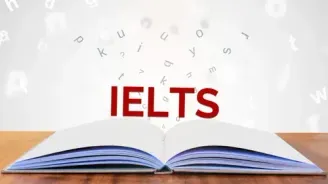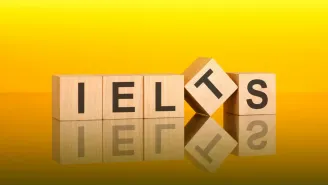Sculpture Reading Answer Passage
Sculpture Reading Answer Passage
Paragraph A. The creation of a three-dimensional item for the express purpose of art and beauty has been going on since ancient times. Traditional sculptures have been crafted from permanent materials, including metal, stone, marble, and jade; however, several subgenres of the art form specialise on making figures of a more transitory nature, such as ice sculpture. In many countries, the sculpture has historically been connected with religious thinking; for instance, Numerous renowned sculptures in Asia are associated with Hinduism or Buddhism.
Paragraph B. Perhaps more so than elsewhere in the world, Africa favoured and celebrates three-dimensional artwork above two-dimensional artwork. Because of evidence of sculpture's existence in Pharaonic Africa, some experts place the origin of sculpture in Africa to the time of 500 B.C. Nok Civilization in Nigeria.
Paragraph C. In the presence of a trained eye, the distinctive style and medium of African art from various regions become immediately obvious. Two unique types may be found in West African figurines. The first kind of sculpture has sharp corners and pointed features on lengthy bodies; such sculptures have historically been used in religious rituals. In contrast, Mande-speaking communities' traditional wood sculptures have wide, flat surfaces on the arms and legs of their spherical arms and legs. Many consider the metal sculptures of the eastern areas of West Africa to be among the finest works of art ever created.
Paragraph D. Sculptures from Central Africa may be made from a larger range of materials, from wood to ivory, stone, or metal, making it more challenging for the untrained eye to recognise. Despite the increasing number of tills, a signature style defined by the use of curvilinear and spherical motifs remains a reliable indicator of the originality of such works. Throughout most of Africa, including in Eastern and Southern regions, it is common to see portrayals of hybrid human and animal beings. Typically, art from the former area takes the form of a human-shaped pole capped with a person or animal figure that has a strong link to death, burial, and the spiritual universe. The traditional value of such works is less appreciated than that of works from other areas of Africa. Examples of these clay sculptures of human/animal hybrids may be found all throughout Southern Africa, with the earliest dating back to about 400 and 600 A.D.
Paragraph E. There are universal commonalities that identify African art as a whole, even though there are significant and defining regional distinctions in creative expression. Mostly a common element is that the emphasis is primarily on portraying the human body. Another characteristic of African art is that it is sometimes motivated by ritual or performance, and the artist often intends for the meaning and significance of their work to be perceived differently depending on the viewer's age, gender, or socioeconomic level.
Paragraph F. There is a wider range of artists throughout Africa to provide a more abstract interpretation of their subjects rather than a realistic and naturalistic one. African art is said to have motivated and impacted artists such as Picasso, Van Gogh, and Gauguin. Beginning in the 20th century, western artists showed a great lot of interest in its capacity to evoke emotional response and imagination due to its ability to do so. Consequently, new works emerged throughout Europe that were more abstract than had been imagined before. Art that properly captured the actual and precise shape of its themes gave way to more intellectually and emotionally engaging art than had previously been seen in this society.
Paragraph G. The followers of the 20th-century "Modernism" movement aspired to go beyond realism in their creative endeavours, and hence, they encouraged experimentation in literary and artistic forms. Henry Spencer Moore, The sculptor who was born in Yorkshire in 1898, played a pivotal role in bringing his unique brand of modernism to Britain. His abstract bronze sculptures of the human form are renowned, numerous critics have seen connections between the undulating landscapes and hills of his native country of Yorkshire and the forms and lines of his sculptures.
Paragraph H. Moore’s work was increasingly in demand by the 1950s, and he was receiving prominent contracts like the one for the UNESCO headquarters in Paris. The sculptor was enormously wealthy at the end of his career owing to his reputation and the scope of the projects he did; nevertheless, a large amount of his money was given to the Henry Moore Foundation, which was founded to fund the education and promotion of the arts. Since Moore's demise in 1986, the foundation's charitable work has continued. This includes providing grants to arts organisations as well as bursaries and scholarships to students and artists.
Let’s explore the questions and answers of the Sculpture reading answer passage.
Sculpture Reading Answers with Sample Questions
Have you read the passage? Now, take the test and find Sculpture Reading answers! Try to answer these questions by yourself before you sneak a peek at the answers given below.
Check Out Top 40 IELTS Reading Practice Test Questions with Answers
Below are some top 35+ free IELTS Reading Practice test online questions with detailed answers to enhance your IELTS preparation online. We have provided sample passages for each test type for your reference.
- What Is Exploration Reading Answers
- Effects Of Noise Reading Answers
- The Discovery Of Baby Mammoth Reading Answers
- The Dead Sea Scrolls Reading Answers
- The Ring-Tailed Lemur Reading Answers
- Why We Need To Protect Polar Bears Reading Answers
- Nutmeg A Valuable Spice Reading Answers
- What Is Meaning Reading Answers
- Cutty Sark Reading Answers
- The Step Pyramid Of Djoser Reading Answers
- South Pole Adventurer Reading Answers
- The Future Of Work Reading Answers
- Ambergris Reading Answers
- Trees In Trouble Reading Answers
- Could Urban Engineers Learn From Dance Reading Answers
- The Flavour Of Pleasure Reading Answers
- The Value Of A College Degree Reading Answers
- Why You Should Delegate Tasks To Team Members Reading Answers
- Corporate Social Responsibility Reading Answers
- Forest Management In Pennsylvania USA Reading Answers
- Making Time For Science Reading Answers
- The Power Of Play Reading Answers
- Coastal Archaeology Of Britain Reading Answers
- How The Other Half Thinks Reading Answers
- Changes In Reading Habits Reading Answers
- The Forgotten Forest Reading Answers
- When Conversations Flow Reading Answers
- Attitudes Towards Artificial Intelligence Reading Answers
- The Ingenuity Gap Reading Answers
- A Bar At The Folies Reading Answers
- Booking A Wessex Cottages Holiday Reading Answers
- Sunset Tours Reading Answers
- Bird Migration Reading Answers
- Clutter Bugs Beware Reading Answers
- The Hidden Histories Of Exploration Exhibition Reading Answers
- Calisthenics Reading Answers
- Having A Lovely Time Reading Answers
- The Return Of Huarango Reading Answers
- Summer Activities At London Kew Gardens Reading Answers
- Computer Games For Preschoolers Reading Answers
- Extinct The Giant Deer Reading Answers
- Micro Enterprise Credit For Street Youth Reading Answers
- Plain English Campaign Reading Answers
- Glow Worms Reading Answers
- How To Prepare For An Interview Reading Answers
- Quiet Roads Ahead Reading Answers







